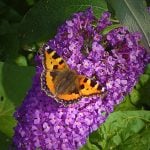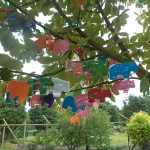High Hopes For Paddy!

Our latest arrival at Flamingo Land is an adult male white-crowned mangabey named Paddy.
Visitors can see him settling into his new home in the mangabey enclosure, in between the tiger and zebra enclosures. Paddy has joined our two resident female mangabeys, Calpurnia and her daughter Sophia.
We hope that in future Paddy will mate with both our females, so that perhaps next year we will have baby mangabeys at Flamingo Land. At first Paddy has been kept in a separate part of the enclosure, so that they can all get to know each other gradually. This is very important as our females may not be immediately welcoming to a new mangabey in their territory. In another week or so they should all be allowed access to the whole enclosure.
Mangabeys are medium-sized monkeys from Africa, also known as Old World Monkeys (as opposed to New World Monkeys from the Americas). They all have long limbs and tails that are longer than their bodies. White-crowned mangabeys have greyish-brown fur, a white underside and a white spot on top of their heads, hence their name. Males are larger than females but have the same colouring. Like all mangabeys, white-crowned mangabeys have white eyelids which they use to communicate with each other by blinking. White-crowned mangabeys are a subspecies of the sooty mangabey.
The majority of the world’s white-crowned mangabeys are found in the western region of Ghana. They are endangered in the wild, and so with the arrival of a male, Flamingo Land hopes to join a small group of zoos in Europe participating in a breeding programme for this rare species. Young can be born at any time of year in captivity, but the gestation period is approximately six months, so it will be a while yet before we see any mangabey babies at Flamingo Land! Wild populations of this species have suffered from hunting by humans and habitat destruction. Exact numbers are uncertain, but there may be no more than a few thousand left. In the wild they live in groups of up to twenty individuals. They are very vocal and stay in constant contact with each other by calling. Unfortunately, this makes them very easy for hunters to track.
White-crowned mangabeys are active by day, foraging in the tropical rainforests for food. They mainly eat fruit but will also take nuts, seeds, insects and spiders. So, why not stop by the enclosure next time you visit and see what ours are eating? You can also see how Paddy is settling in and try to spot them blinking at each other!


